- Home
- Stephen E. Ambrose
Supreme Commander Page 5
Supreme Commander Read online
Page 5
The key feature of the reorganization as a whole (completed on March 23) was the unequivocal grant of broad power over the entire Army to the Chief of Staff. Inevitably in practice this resulted in placing power in the hands of Eisenhower’s division, renamed the Operations Division (OPD), since it was to that agency that Marshall turned for strategic plans and directives and the transmission of orders to theaters.18
Although Eisenhower headed OPD, although OPD was Marshall’s command post, and although Marshall had enormous powers, neither Eisenhower nor Marshall nor anyone else was, at any time, solely responsible for the strategic direction of the war. The conflict was too vast, the commitment of men and material too great for anyone to have the situation as a whole complete in his mind. It took dozens of men to work out the details of allocation of resources, industrial priorities, shipping space, and supply problems, to plan and execute operations involving hundreds of thousands of men, ships, and planes. All big offensives needed a lead time of from three to six months to prepare. In the first two years of American participation, shortages of everything compounded the problem. “It’s a back breaking job to get a single battle order out,” Eisenhower noted, “and then it can’t be executed for from 3–4 months!!!”19
Even had there been someone in the War Department trying to run the entire show himself, he would have met constant frustration. Marshall, Eisenhower, and OPD were not working in a vacuum; their solutions often did not agree with those of the U. S. Navy or the President and seldom were they in complete accord with the British. Eisenhower put it succinctly: “In a war such as this, where high command invariably involves a Pres., a Prime Minister, 6 Chiefs of Staff and a horde of lesser ‘planners’ there has got to be a lot of patience—no one person can be a Napoleon or a Caesar!” Still, it was frustrating. “My God,” he declared, “how I hate to work by any method that forces me to depend on anyone else.”20
All of which does not mean that OPD played a minimal role in the war. Marshall’s authority over the United States Army was complete, and he exercised it mainly through OPD. His voice carried great weight with the President, the Prime Minister, and on the CCS, and he relied upon OPD for background material and detailed planning. Marshall set the goals, while OPD prepared the studies that showed how they could be accomplished.
In February 1942 what Marshall wanted was a coherent statement that he could present to the President and to the CCS which would outline a general strategy for the war. Eisenhower prepared it for him toward the end of the month. It began with a question. “What are the vital tasks that must be performed by the United Nations in order to avoid defeat [during the period while they prepared for an offensive]?” Eisenhower’s answer was to secure the North American citadel, maintain England, assist Russia to stay in the war, and secure the Indian-Middle East position. He realized that there were many other tasks that would contribute greatly to the goal, but classified them as “highly desirable” rather than as a “must,” resting his classification on a rule used in OPD: “Will the loss of the particular area render our strategic situation so desperate as to make an eventual victory practically impossible?” Under that criterion, the Southwest Pacific was only very important, not vital.
Eisenhower’s second question was, where could an eventual offensive be launched that would do most toward defeating the Axis? His answer was short: “An attack through Western Europe.” He then developed the detailed reasoning behind the proposal. The major Allied problem was shortage of ships and an attack through western Europe involved the shortest possible sea routes, thus placing “a minimum strain upon shipping.” The sea lanes to England had to be maintained in order to feed the British whether or not an American build-up in England took place, so creating a theater in western Europe did not involve dispersion of escorting vessels for ships. The base for the proposed theater would be England; if the United States immediately began building up air and ground forces on the island it would constitute a threat which Germany could not ignore, thus forcing the enemy to leave some of its divisions in France and thereby aiding the Russians. Land communications in western Europe were superior to those available “in any other area from which either enemy can be attacked.” England already had airfields from which a large air force could operate to secure air superiority, a sine qua non of a successful assault. “Nowhere else is there such a base, so favorably situated with respect to either of our enemies.”
In conclusion, Eisenhower emphasized that the recommendation offered “the only feasible method for employing offensively a major portion of the British combat power.” If a large offensive were attempted elsewhere, the British would have to keep a large proportion of their forces at home, “useless, except for the protection of that island.” Finally, Eisenhower scribbled by hand, “It attempts to attack our principal enemy while he is engaged on several fronts; hence speed in preparation is important.”
Eisenhower’s plan was bold and imaginative, and—for 1942 at least—impossible. Like his countrymen, when he was confronted with a problem Eisenhower tended to overcome it through the most direct and quickest method possible. The United States had been in the war for only three months, had no combat-ready divisions in England, could expect to get no more than a dozen there by the end of the year, had a quarter-trained, inadequately equipped air force that had practically no combat experience, a Navy whose principal fighting ships rested at the bottom of the sea and which had hardly any assault landing craft, and a General Staff that was in the midst of a badly needed reorganization. Yet Eisenhower was proposing that this nation immediately plan to come to grips with the mighty Wehrmacht and Luftwaffe in an all-out campaign on the plains of northwestern Europe.
Eisenhower did recognize certain possible objections, chief of which was “the difficulty of organizing, on the shores of Western Europe, a force of sufficient strength to meet the hostile opposition that could be brought against it.” To be successful, he realized, the plan needed the complete and enthusiastic support of the CCS, overwhelming air support, ample landing craft, and sufficient shipping to support the operation. And, the Allies would have to husband their combat power “to acquire the necessary strength, and avoid the evils of unjustified dispersion.” In short, Eisenhower wanted to skip that part of Churchill’s program that called for closing the ring before engaging the bulk of the Wehrmacht on the Continent.
Since planners could not plan unless they had a definite target, Eisenhower argued that, if the British did not agree, “we must turn our backs upon the Eastern Atlantic and go, full out, as quickly as possible, against Japan!” This threat to abandon the British if they refused to follow American strategic conceptions would later be used by Marshall and King. It had a hollow ring to it. Commander in Chief Roosevelt never gave it serious consideration and it is doubtful if even the War Department did. Certainly there was never enough detailed planning done to make the threat believable. The Americans were simply too impressed by the logic of their own arguments about the strategic advantages of fighting in Europe, Germany was so obviously the major threat, Japan’s resources were so clearly limited, and American historic, cultural, and economic interests were so much more important in Europe than in Asia, that it would have been inconceivable for the United States to turn its back upon Europe “and go, full out, as quickly as possible, against Japan!”
There were, to be sure, deep emotional currents in the United States that would have supported such a switch in grand strategy. The country had been humiliated at Pearl Harbor. The men of Bataan had evoked a response of admiration and a determination to avenge them. The racist overtones to the war in the Pacific made that conflict, in the eyes of millions of Americans, more important than the war in Europe. Finally, at the time Eisenhower made the threat, the Japanese were winning everywhere. But none of these factors, real as they were, negated the basic arguments Eisenhower developed earlier about the advantages of Europe as the main theater.
In his late February memorandum, Eisenhower emp
hasized the overriding reason for a Europe-first strategy. The fundamental fact of World War II, from June 21, 1941, onwards, was the Russo-German war. Here was where the major forces were engaged, where the greatest killing was done, where the stakes were highest. Whoever won on Germany’s eastern front would win the war. On the banks of the Volga, where Germany had made by far her largest commitment, and not in the South China Sea or in the central Pacific or even in the desert around Tobruk, the issue would be decided. Under the circumstances, the first priority for the Western Allies was to keep Russia in the war.
To do so, Eisenhower declared, it was necessary to provide maximum material aid through lend-lease and to “conduct such operations as will directly and indirectly assist in taking the pressure off of the Russian Armies.” The threat of the build-up in England would help accomplish this, as would direct support of the Middle East, by keeping Germany and Japan separated and denying to Germany badly needed oil. But the major help the Allies could give would be in opening a second front. Eisenhower felt that if this could not be done in the summer of 1942, then the Allies should send more of their major strength into the Middle East. He realized this would delay the opening of the second front, but “if the diversion must be made, we should realize it promptly and act accordingly.”21
Nothing in Eisenhower’s program was new. Marshall had long since been advancing its major provisions. The memorandum did swing the War Department’s attention back to Europe, and at Marshall’s request Eisenhower, on February 28, submitted a fuller, more formal study. He included most of his arguments from his earlier memorandum but made significant additions. He began by pointing out that “time works in our favor. The hostile power is now at its maximum, ours will grow—provided none of the principal members of the United Powers is defeated and forced to capitulate.”
The main thrust of Eisenhower’s argument was to differentiate between operations which were “necessary to the ultimate defeat of the Axis Powers” and those which “are merely desirable.” In the first category he placed the maintenance of the United Kingdom, the retention of Russia in the war, and the safety of the India-Middle East theater. Things which were merely desirable were, in order of priority, security of Alaska, holding bases west and southwest of Hawaii, security of Burma, security of South America, security of Australia, and maintaining the trans-African air route. Eisenhower insisted that the distinction between the necessary and the desirable had to be “rigidly observed,” and that the Allies hold strictly to the principle that “minima should be diverted to secondary or merely desirable objectives, while maxima are to be striven for in primary, essential, operations.”
In the case of helping Russia, Eisenhower argued that it would not be sufficient to urge upon the Soviets the indirect advantages that would accrue to them from Allied operations in remote theaters, nor would it suffice to step up lend-lease. The United States could not expect to win the war by paying others to do the fighting. “Russia’s problem is to sustain herself during the coming summer,” Eisenhower declared, “and she must not be permitted to reach such a precarious position that she will accept a negotiated peace, no matter how unfavorable to herself, in preference to a continuation of the fight.” The Western Allies had to initiate operations that would draw off sizable portions of the Wehrmacht; the operations had to be “so conceived, and so presented to the Russians, that they will recognize the importance of the support rendered.” An immediate air offensive from England against Germany, with a ground offensive to follow, “is indicated.”
The Eisenhower program represented a compromise between two schools of thought then current in Washington. Some War Department officers, especially in the Army Air Force, were arguing that the United States should abandon Australia and New Zealand, pull all the way back to Hawaii, build a passive defense there, and throw everything else into Europe. In the Navy there was strong sentiment, shared to a certain extent by Admiral King, to leave Europe to the British and go all out in Asia. Eisenhower’s middle way became the accepted strategy, partly because it reflected Marshall’s and Roosevelt’s thinking, partly because it was the most logical—what was the point of using dreadfully scarce shipping to pull troops out of an unthreatened Australia?
Eisenhower used his strongest arguments against the Asia-first advocates. He pointed out that both the War and Navy Departments had long ago agreed that in case of a two-ocean war the United States would make its major offensive effort in Europe. He realized that some Navy Department officials now wanted to change that commitment. Their latest argument was that it was a strategic axiom that, when a divided enemy was encountered, the weaker portion should be attacked and defeated first, and in this war the European Axis was far stronger than the Japanese. Eisenhower denounced such reasoning as “without validity.” Military estimates, he pointed out, were based on “relative power at a particular point of actual or possible contact.” Japan was relatively stronger in Asia than Germany and Italy were in Europe, both because of the Japanese geographical position and because of the relatively small force that could be brought to bear and maintained against her. “This is particularly true as long as Russia is in the war.”
If the Russo-German war was the first fact of World War II, until 1944 the second was to be the relative scarcity of British-American shipping, because it made it difficult for America to exert her great strength. Thus, in addition to all the other arguments in favor of a European rather than Asian offensive, the final, unanswerable one was, “To conduct a war in East Asia requires, for the same number of troops to be maintained there by U.S. and England, at least three, possibly four, times the shipping needed for a force of similar strength in the Western Atlantic.” The United States had to “seek for the shortest possible line of overseas communication to our major effort.”22
Marshall read and approved Eisenhower’s memorandum. It, and other studies, became the basis on which the Joint U. S. Strategic Committee, an agency of the JCS, considered future strategy. On March 6 the committee accepted Eisenhower’s arguments and declared itself in favor of the general principle, “If the war is to be won in Europe, land forces must be developed and trained which are capable of landing on the continent and advancing under the support of an overwhelming air force.” This required “strict economy of force in other theaters.”23
The United States now had a strategic solution to the problem of victory in World War II. The British had accepted the major organization concepts, an over-all directing committee composed of the Chiefs of Staff, and unity of command within a theater. The task now was to throw out the rather vague agreements about closing the ring that the Americans had accepted at ARCADIA and get the British to adopt Marshall’s strategic formulation of an early assault on the Continent. To that task the War Department began to devote its energies.
CHAPTER 3
BOLERO: The Build-up in England
If the Americans had a program, so did the British, and they had no hesitation about criticizing Marshall’s ideas. In the middle of March 1942 the British Joint Staff Mission in Washington presented for planning use a study that called for landing British forces near Le Havre, France, early in the summer of 1943, but only “under conditions of severe deterioration of German military power.” The British flatly stated that the operation would have to be postponed if the enemy had not already been “weakened in strength and morale.”1 Thus while the Americans saw the cross-Channel assault as the chief method to defeat Germany, the British viewed it as a mopping-up operation which would follow the closing and tightening of the ring.
The conceptual difference was crucial, for the Americans could not even dream of going it alone. Any cross-Channel assault in 1942, and even in 1943, would have to be primarily British. OPD estimates were that by July 1 the United States could ship to the British Isles exactly no ground forces, by October 1 some 70,000, and by January 1, 1943, only 207,000. Since Marshall, Eisenhower, and all others concerned agreed that it would take 600,000 ground troops to cause a
material diversion of German forces from the Russian front, there was no doubt that the American “force available for the European Theater is not adequate immediately for a major offensive.”2
Or at least for a major offensive in western Europe. Other areas, notably Norway and North Africa, were available. Churchill was a strong advocate of either or both theaters and the War Department had additionally to operate under the constant pressure of Roosevelt’s dictum that American troops had to be fighting Germans somewhere in 1942. The great advantage of the peripheral theaters was that the Germans could not bring much strength to bear in them, so fewer American forces would be needed. The great difficulty was that, once involved in a theater other than France, the United States would find its resources being drained and the second front delayed.
Marshall and Eisenhower had a complicated task. They had to convince the British of the feasibility of a cross-Channel attack before Germany was seriously weakened while simultaneously fending off the President. For Roosevelt’s benefit they had to act as if a 1942 invasion was their objective, but because they recognized that this was almost impossible, even with British support, when presenting their plans to London they had to soft-pedal 1942 and argue for the possibilities in 1943. Marshall, Eisenhower, and OPD tried to carry water on both shoulders, but the lack of candor made them vulnerable and led to their eventual failure.
The first OPD official to urge realism about 1942 was one of Eisenhower’s most capable subordinates, Colonel Thomas T. Handy, a Virginia Military Institute graduate who would become a full general and Eisenhower’s successor as head of OPD. Handy insisted that Eisenhower and OPD—and by inference Marshall—accept the fact that America could make no important contribution to a 1942 invasion and that the British, deeply involved in the Middle East, could hardly do it alone. Other problems, principally the absence of shipping and landing craft, also had to be faced.3

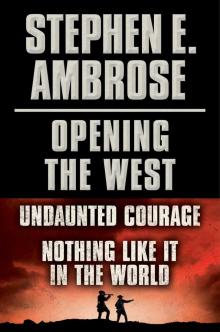 Undaunted Courage
Undaunted Courage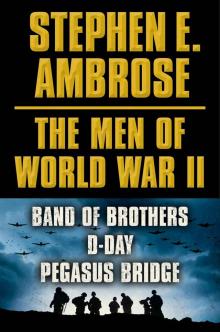 The Victors: Eisenhower and His Boys
The Victors: Eisenhower and His Boys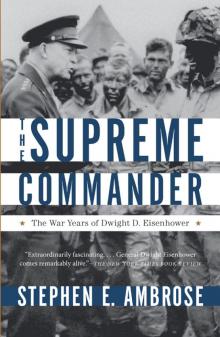 The Supreme Commander
The Supreme Commander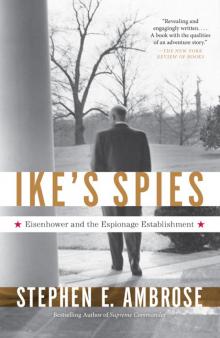 Ike's Spies: Eisenhower and the Espionage Establishment
Ike's Spies: Eisenhower and the Espionage Establishment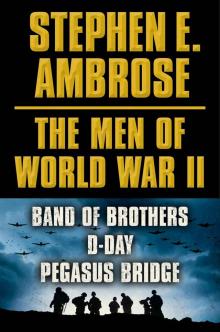 The Men of World War II
The Men of World War II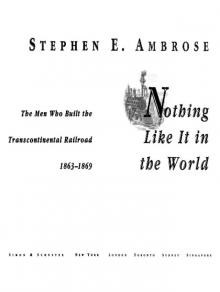 Nothing Like It in the World The Men Who Built the Transcontinental Railroad 1863-1869
Nothing Like It in the World The Men Who Built the Transcontinental Railroad 1863-1869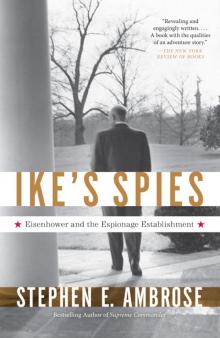 Ike's Spies
Ike's Spies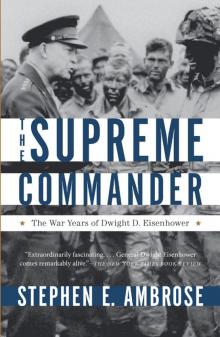 Supreme Commander
Supreme Commander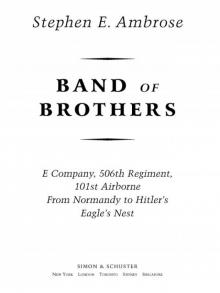 Band of Brothers
Band of Brothers